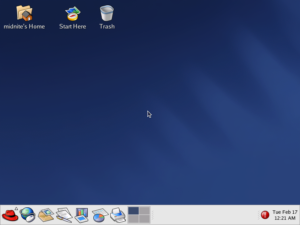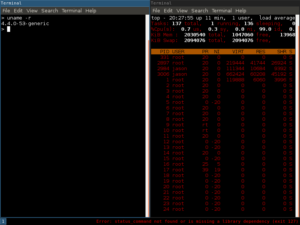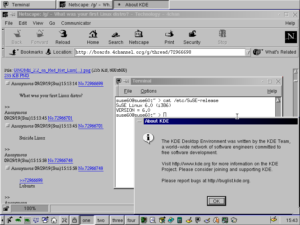Suggestions and thoughts on Linux distributions
Ubuntu and Debian are commonly recommended “beginner” distributions. I’d say you should either try Manjaro first or at least look at one of the alternative flavours of Ubuntu with a better desktop environment. It handles the installation for you and makes adding drivers and such easy. And they provide multiple desktops right on their website, so you can take a look. XFCE is pretty lightweight and you can theme it. KDE is pretty heavy but looks better out of the box. Both are plenty usable and better than GNOME, and i3 is an additional learning curve you probably aren’t ready for yet. Is there a learning curve for Linux? Absolutely. You need to unlearn a lot of Windows behaviours and expectations. Sometimes this is the failure of the distribution (see below), and other times it’s because Windows has made some choices and now people just accept that’s how “computers” are. Little things like “oh, you can’t do that from here”. Why? Because it’s not that program’s job. Windows users tend to just want it where they expect it and don’t care about system design concerns.

Any distribution that tries to force GNOME or derivatives (including Unity) on you out of the box is going to be slow. They tried so hard to be “feature complete” and newbie-friendly, but all they’ve done is provide a worse OSX-style experience with tons of bloat. Lubuntu or Xubuntu, out of the box, is a better experience. It’s faster and it’s going to be more familiar for Windows users trying to run a second install. Even KDE has better performance than GNOME in my experience, and it’s also pretty bloated. At least they don’t try to pretend it’s lightweight, and value-adding features instead of removing them. Still have to deal with Aptitude, but at least it’s a step in the right direction. Especially for newbies who don’t know how to change desktop environments. Manjaro is fine until it breaks and then requires advanced knowledge to fix.
So does Debian/Ubuntu/Mint, but the knowledge required is different. Personally, I’d rather deal with a partial upgrade where I have to resolve dependencies using package management directly. Fixes are easy, you just don’t know what you need to do. It’s inexperience, but between the Gentoo/Arch wiki and some searching, you will learn the correct way to fix the problem, and those solutions will often work, to some degree, on other distros. On Debian and its derivatives, the problem is usually caused by maintainers packaging the files you need in a way that is unsuitable for you. It’s probably a couple of years out of date. It’s also possible there’s a bug for your exact release, and you can’t fix it without a dist upgrade. Oh, but that dist upgrade might mean other packages get moved to a version that isn’t compatible with what you’re trying to do. Okay, so the official repositories for Debian and others are shit, but you can always pull in PPAs. Well, maybe, if someone has one. And if aptitude feels like letting you do it. Some require you to add keys first, which usually entails looking up said key and blindly pasting a command to wget/curl it and input it to your keyring because newbies have no idea how to search a key database.

This is a “safety” measure that encourages newbies to paste strange commands into their terminal. And if the PPA you want doesn’t exist or doesn’t offer the exact version you want? Now you need to compile it from the source. And because of dependencies, you probably also need to compile all of those from the source. And if you hit a wall here as a newbie? Good luck troubleshooting it when you don’t even know your environment. Meanwhile, on Gentoo and Arch, you could have just run a single command and the package manager would gladly download the latest stable release, as well as dependencies, compile them from the source and install them for you. You can skip to the conclusion of hours of troubleshooting and do it the easy way. And the wiki usually documents issues here. Why spend hours reading StackOverflow posts from 5-10 years ago with outdated information to solve what is, ultimately, a problem caused by Debian’s terrible packaging and mismanagement, when you could spend that time reading the wiki, learning how the system works, and fixing a real issue? The people who promote Debian and its downstream distros are deathly afraid of leaving the wading pool, but as a result, they never learned to swim.

With Debian, you have to spend a few hours grinding away your will to live fighting aptitude and their packaging decisions. You eventually discover that, due to ship dates, one library is nearly four years out of date, and another is two, and there aren’t any releases that package compatible versions for what you need. So you end up having to compile both and all their dependencies manually. It’s common for this to happen, and the package manager will fight you and not let you link stuff properly since it will want to use system versions of everything, even hopelessly out of date libraries. For rolling releases, you’re probably on the cutting edge and everything is within some degree of compatibility. AUR provides scripts to compile and install for your OS automatically, and Gentoo packages are all just compiled scripts, basically. Since you’re always compiling, it’s a first-class experience. Compare with Debian and Ubuntu where you have to install the compiler and basic libraries via a package manager first.
It’s about what the maintainers expect you to be doing, and the maintainers of Debian and its downstream think that under no circumstances should you be compiling. You should use their packages, which have been wisely chosen to be stable. Except their packaging decisions are not always the best. Their distribution is not always the best. And when users don’t know what’s best for them, their distro will try to force them to do the “right” thing and just accept what is provided. At least when you end up having to compile I’ll just say that compiling and finding dependencies on rolling releases has been far easier, and I found the experience less frustrating than “stable” releases that claim to have everything packaged but actually don’t.